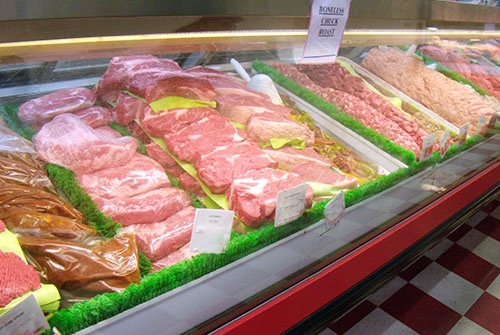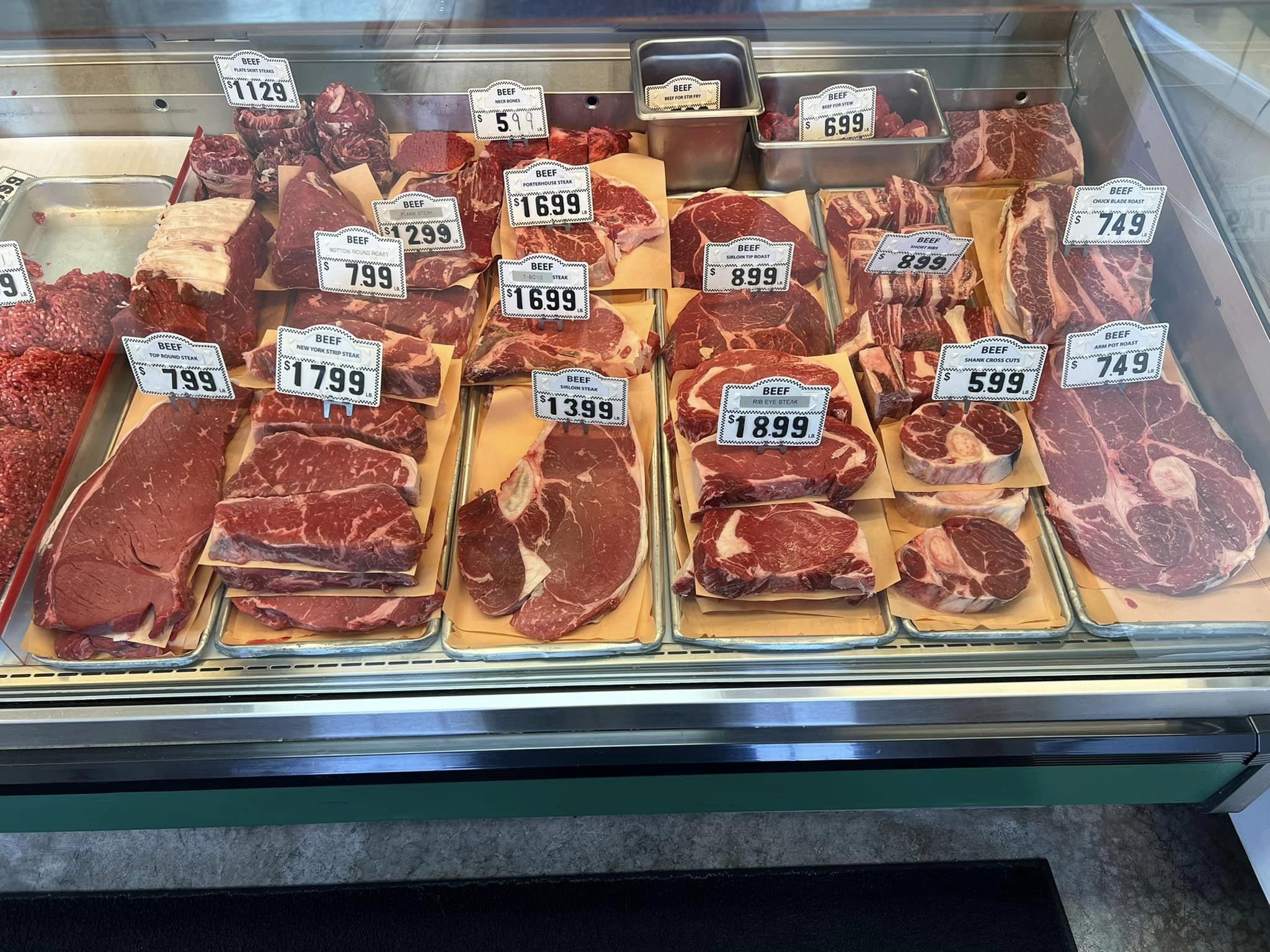Leading Reasons to Patronize Bagley Farms Meat Market Edwardsville IL for Costs Meats
Leading Reasons to Patronize Bagley Farms Meat Market Edwardsville IL for Costs Meats
Blog Article
Discover the Art of the Butcher's Cut in a Modern Meat Market
In the ever-evolving landscape of modern-day meat markets, the butcher's cut has actually transcended its typical origins, merging age-old craftsmanship with modern methods. bagley farms meat market edwardsville il. Today's butchers are not simply processors of meat; they are experienced artisans who stress sustainability and moral sourcing. Their expertise in choose and preparing cuts tailored to particular cooking demands provides an unequaled dining experience. Yet, what genuinely establishes the modern butcher apart is their capacity to create a deeper link between customers and the origins of their meat. How do these masters equilibrium tradition with innovation, and what effects does this have for the future of meat consumption?
Development of Butchery Strategies

The mid-20th century saw butchery strategies better improved by scientific insights right into muscle biology and meat aging, improving both inflammation and taste. Developments like vacuum product packaging and refrigeration expanded item shelf-life, enabling butchers to branch out offerings and improve quality control. This duration likewise noted the surge of customized tools, such as band saws and meat slicers, which boosted precision and performance in meat handling.
Computerized systems currently assist in tracking pet provenance and optimizing cuts to satisfy specific customer preferences. Furthermore, a renewal in artisanal butchery has emerged, mixing traditional skills with modern-day understanding to provide to consumers seeking honest and lasting meat options.

Understanding Meat Cuts

Understanding the details of meat cuts is necessary for both butchers and consumers looking for high quality and worth. For butchers, exact cuts mirror skill and regard for the craft, making certain very little waste and ideal yield.
The primary classifications of meat cuts include primal, sub-primal, and retail cuts. Primal cuts, such as the loin, rib, and chuck, are the huge sections originally separated from the carcass. Butchers after that break these down additionally into sub-primal cuts, prior to finally creating retail cuts available to customers, like ribeye or tenderloin. Each stage needs careful interest to physiological structure and muscle mass composition.
Understanding muscle mass make-up is essential; muscular tissues used much more regularly by the animal have a tendency to be harder and are best matched for slow cooking techniques, while less-used muscular tissues, like those found in the loin, are more tender and suitable for cooking or roasting. Knowledge with these distinctions equips customers to make enlightened selections, enhancing their culinary ventures.
Choosing High Quality Meat
Choosing the appropriate meat includes more than simply choosing a visually enticing piece from the display. The art of selecting quality meat calls for a discerning eye and knowledge of details qualities that signify quality and excellence.
Second of all, consider the marbling, which describes the white streaks of fat within the muscle mass. Proper marbling is a crucial sign of inflammation and flavor, as it thaws during food preparation, improving the meat's juiciness. Remember, greater marbling frequently associates with superior top quality cuts, such as USDA Prime.
Structure is an additional important element; meat needs to feel strong to the touch, not slimy or excessively soft. Additionally, bear in mind the aroma. Fresh meat ought to have a tidy, neutral smell, without any sour or repulsive smells.
Matching Cuts With Food Preparation Methods
Efficiently coupling cuts of meat with the appropriate cooking techniques is necessary for attaining optimum taste and appearance. These approaches boost the meat's all-natural tastes and ensure a juicy finish.
Conversely, tougher cuts like brisket and chuck roast are rich in collagen, which breaks down right into jelly when prepared gradually. These cuts are excellent for braising or slow roasting, allowing the meat to soften gradually and establish deep, complicated flavors. Cuts such as short ribs and pork shoulder fare well navigate here with slow-cooking approaches, where expanded cooking times change their durable structures into succulent recipes.
Lamb shanks and oxtail, which need additional resources extended cooking to soften, are best candidates for stewing or slow simmering. These approaches coax out rich, hearty tastes while preserving moisture. By understanding the distinct attributes of each cut, chefs and home chefs alike can raise their culinary productions, making certain each meal is both satisfying and remarkable.
The Butcher's Function Today
Navigating the advancing landscape of the contemporary meat market, the butcher's duty today extends past plain preparation of cuts. Contemporary butchers are cooking craftsmens, educators, and supporters for sustainable methods.
Along with crafting accurate cuts, butchers currently involve directly with clients, supplying cooking guidance and customizing selections to fit specific needs and preferences. Their competence in meat aging, marbling, and taste profiles equips customers to make enlightened decisions, boosting their culinary experiences. This customized solution exhibits the butcher's evolving role as a trusted consultant in the cooking area.
Moreover, butchers are critical in lessening waste, using whole pets to develop varied products such as sausages and stocks - bagley farms meat market edwardsville il. This extensive technique not just values the animal however likewise straightens special info with modern sustainability objectives. By doing this, the modern butcher embodies both tradition and development, adapting to an ever-changing market while protecting the creativity and honesty of their craft

Verdict
Mastery in comprehending varied meat cuts and quality signs encourages butchers to offer enlightened suggestions, straightening specific cuts with ideal food preparation techniques. By honoring historical techniques while embracing contemporary demands, the butcher's function continues to be vital in today's advanced meat market.
Report this page